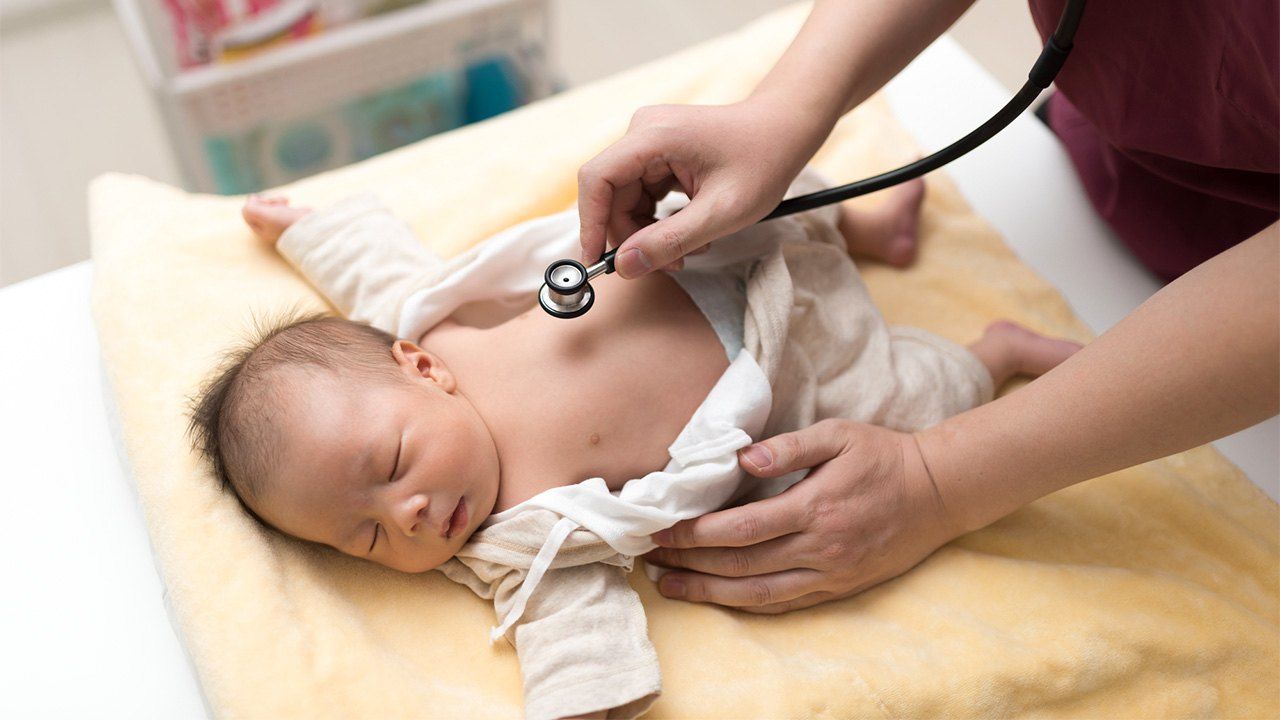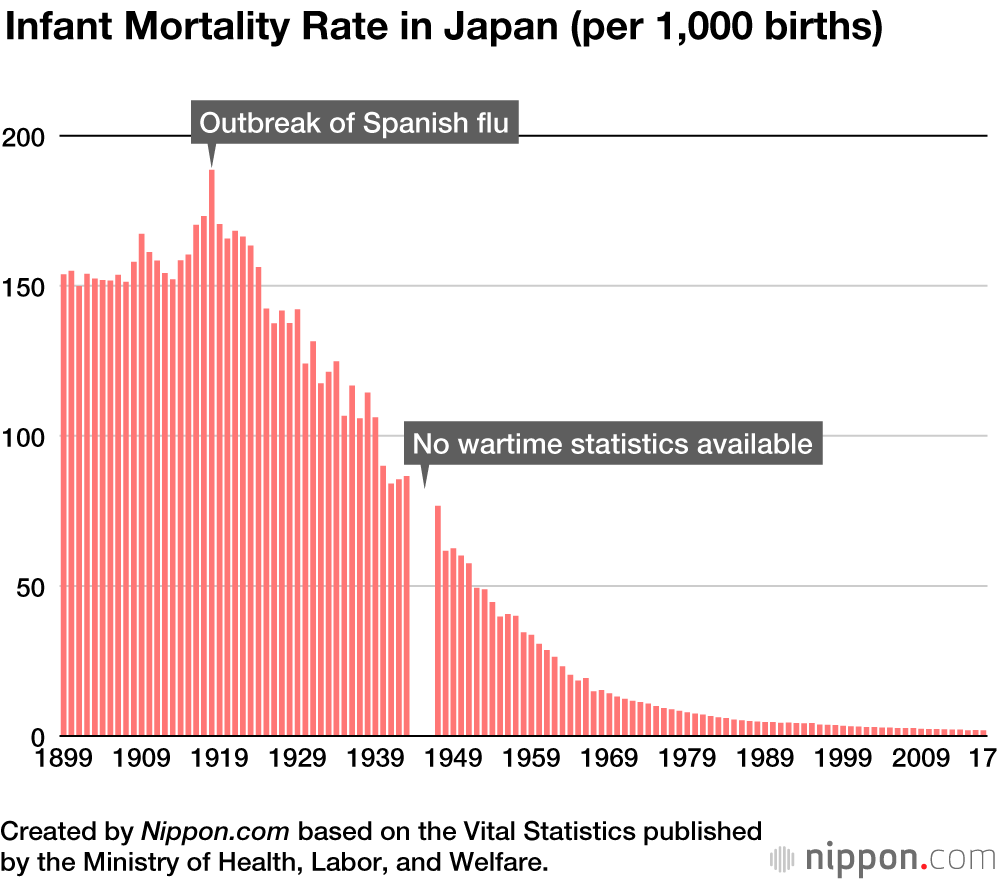
Close Care Keeps Japan’s Infant Mortality Low
Society Health- English
- 日本語
- 简体字
- 繁體字
- Français
- Español
- العربية
- Русский
Japan is a highly favorable country for infant health. According to a Ministry of Health, Labor, and Welfare report, there were 1,761 deaths before the age of one year among infants born in 2017, for an infant mortality rate of 1.9 per 1,000 births—equaling the rate in 2015, which was the lowest level on record. And the neonatal mortality rate among infants up to the age of four weeks was 0.9 per 1,000 deaths. Both are among the lowest in the world.
Infant Mortality Rates Worldwide (per 1,000 births)
| Japan | 1.9(2017) |
| United States | 5.9(2015) |
| Singapore | 2.4(2016) |
| France | 3.5(2015) |
| Germany | 3.3(2015) |
| Italy | 2.9(2015) |
| The Netherlands | 3.3(2015) |
| Sweden | 2.5(2015) |
| Britain | 3.9(2015) |
Created by Nippon.com, based on the Vital Statistics Overview published by the Ministry of Health, Labor, and Welfare (trends up to 2016) with a more recent figure for Japan.
In 1947, just after World War II, Japan’s infant mortality rate was 76.7, which was relatively high compared to other countries. But from the late 1950s into the 1960s, when the economy was rapidly expanding, improvements in sanitation and nutrition brought about a steady decline in infant mortality.
When expecting mothers undergo diagnosis during pregnancy, they are given a Mother-Child Health Handbook. The handbook concisely lists important information, such as points of caution during pregnancy, necessary examinations before and after delivery, and types of vaccinations infants need and the timing for them, as well as records of the medical treatment received. This system facilitates the early detection of problems related to the mother or child’s health or to infant development, and on that basis, physicians are able to make prompt and accurate diagnoses when a mother or child undergoes a medical examination.
The system was originally introduced in Japan in 1948, and was another key factor in reducing infant mortality. Mother-Child Health Handbooks are now in use in around 40 countries worldwide though the support of the Japan International Cooperation Agency and private organizations.
(Translated from Japanese. Banner photo © Pixta.)
